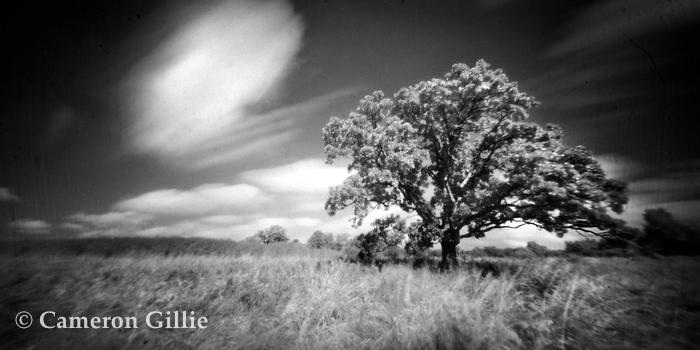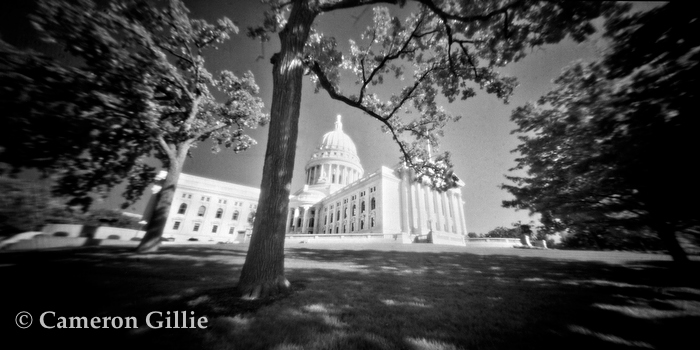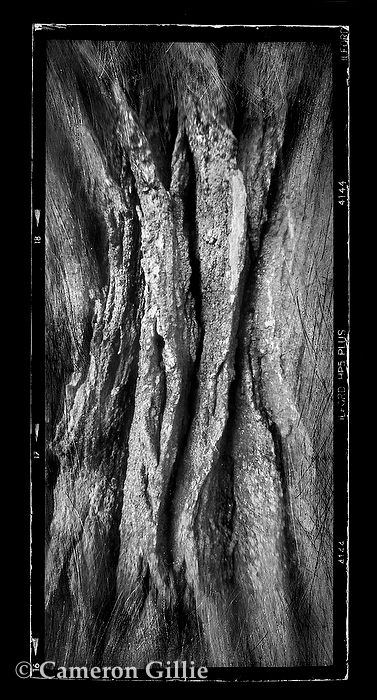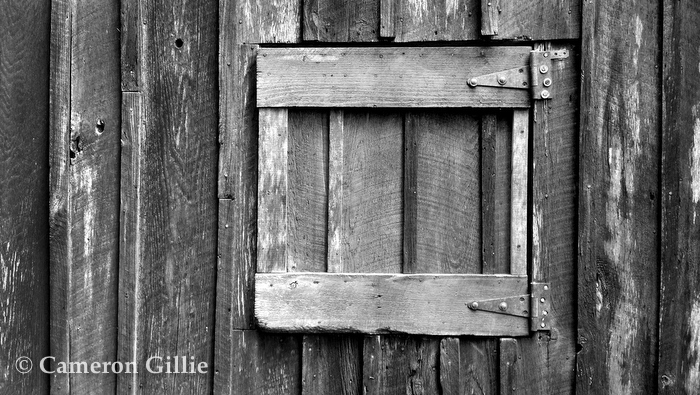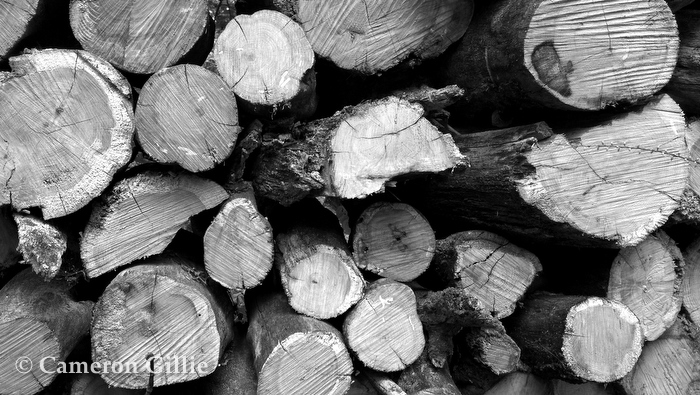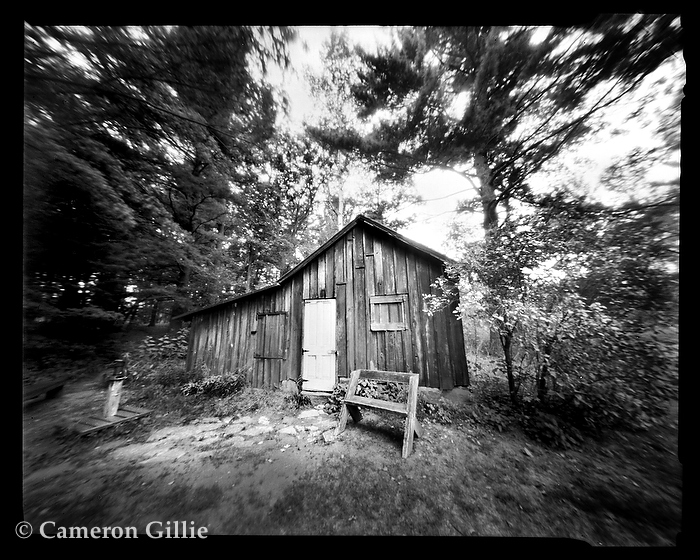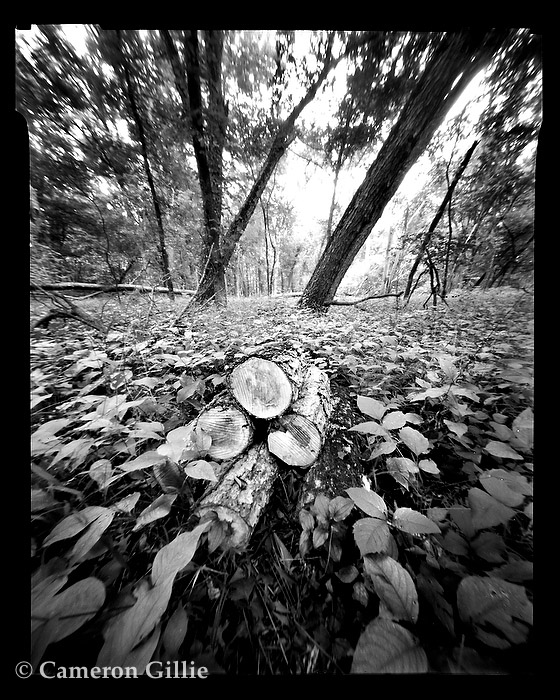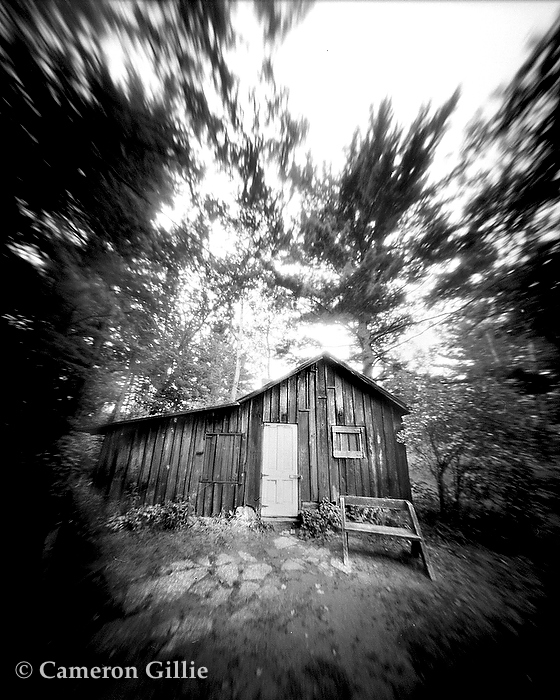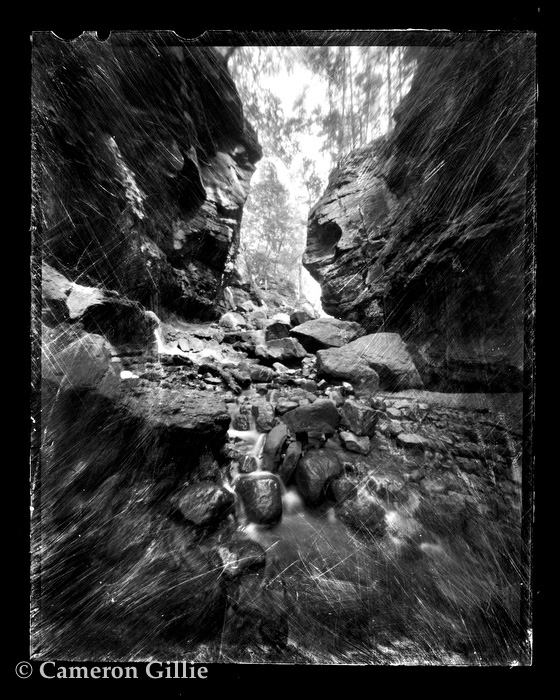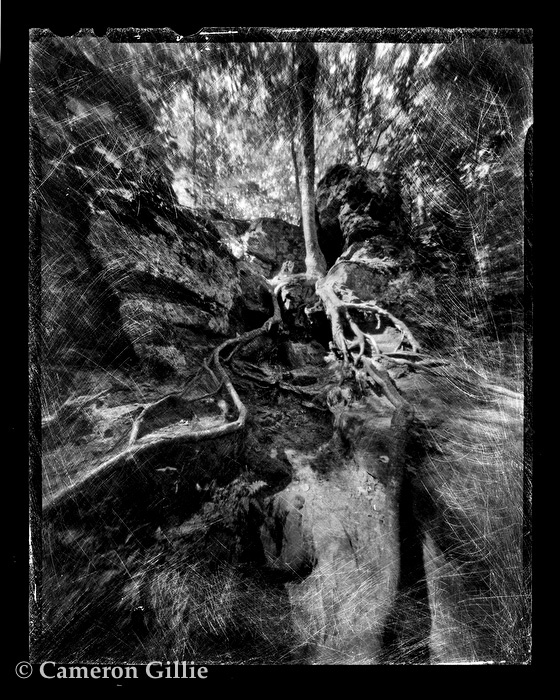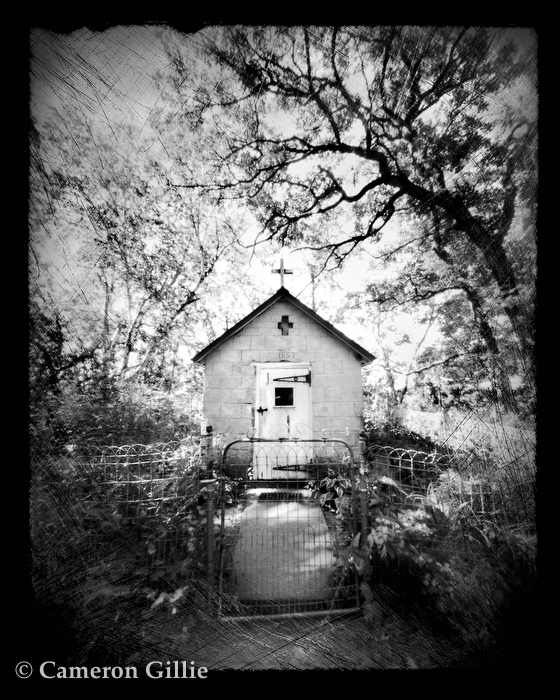This week’s project was a test of infrared film in a pinhole camera and a photo tribute to Earth Day founder Governor Gaylord Nelson. Governor Nelson State Park is named after him and is located on the north shore of Lake Mendota in Madison. From the lakeshore in the park you can look across the water at the State Capitol where he served two terms as governor before he went on to serve two terms as a U.S. Senator. He was an advocate for the environment his entire life. It’s fitting that a State Park within sight of the capitol is named after him.
An oak tree stands alone in the prairie in Governor Nelson State Park.
Four and a half miles across the lake is the state capitol building. The infrared film proved to be a challenge for use in a pinhole camera, but I got it to work in the end. I like the dreamy look to it, but I’m not sure I’m going use it too often. It was a learning process anyway.

